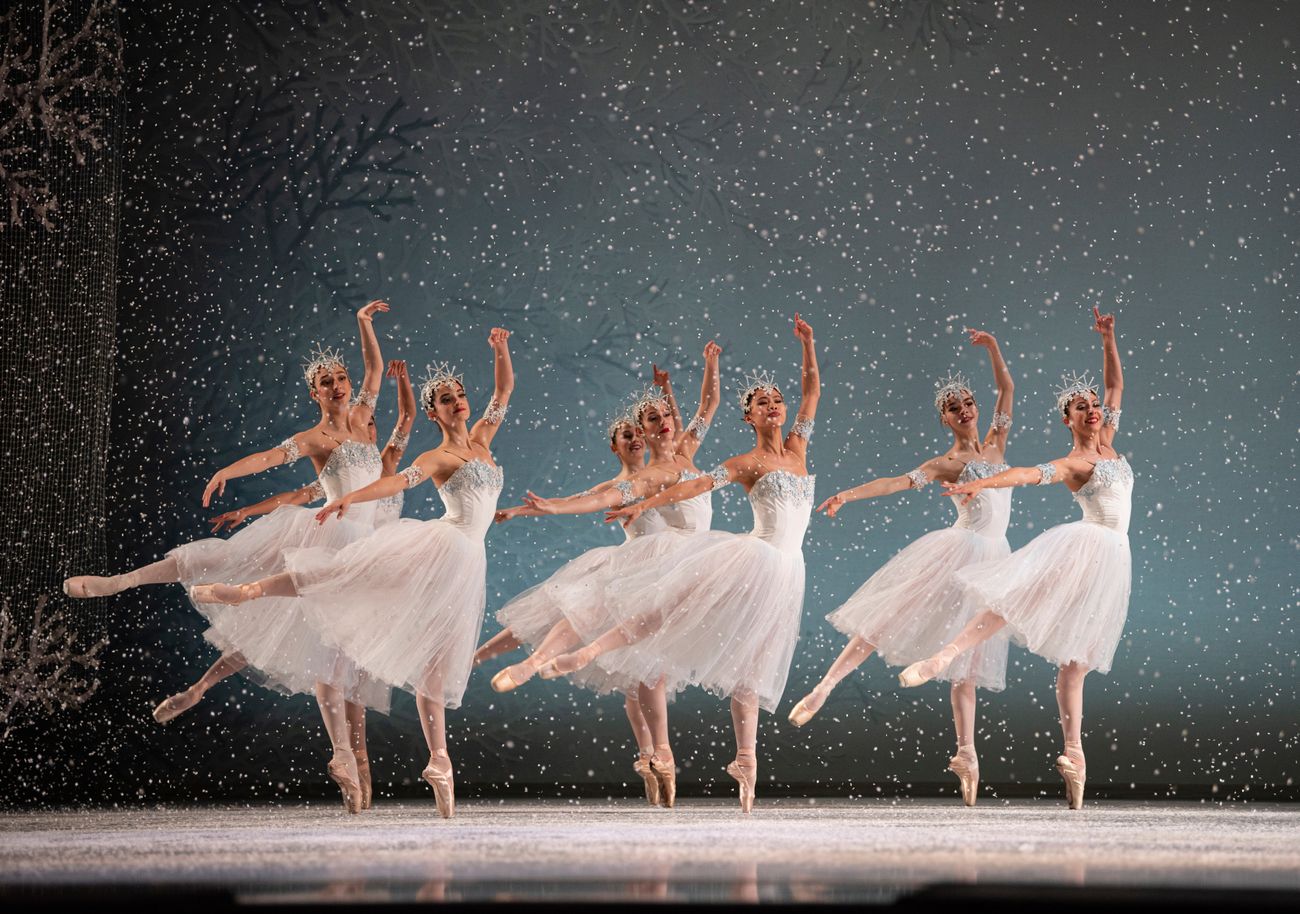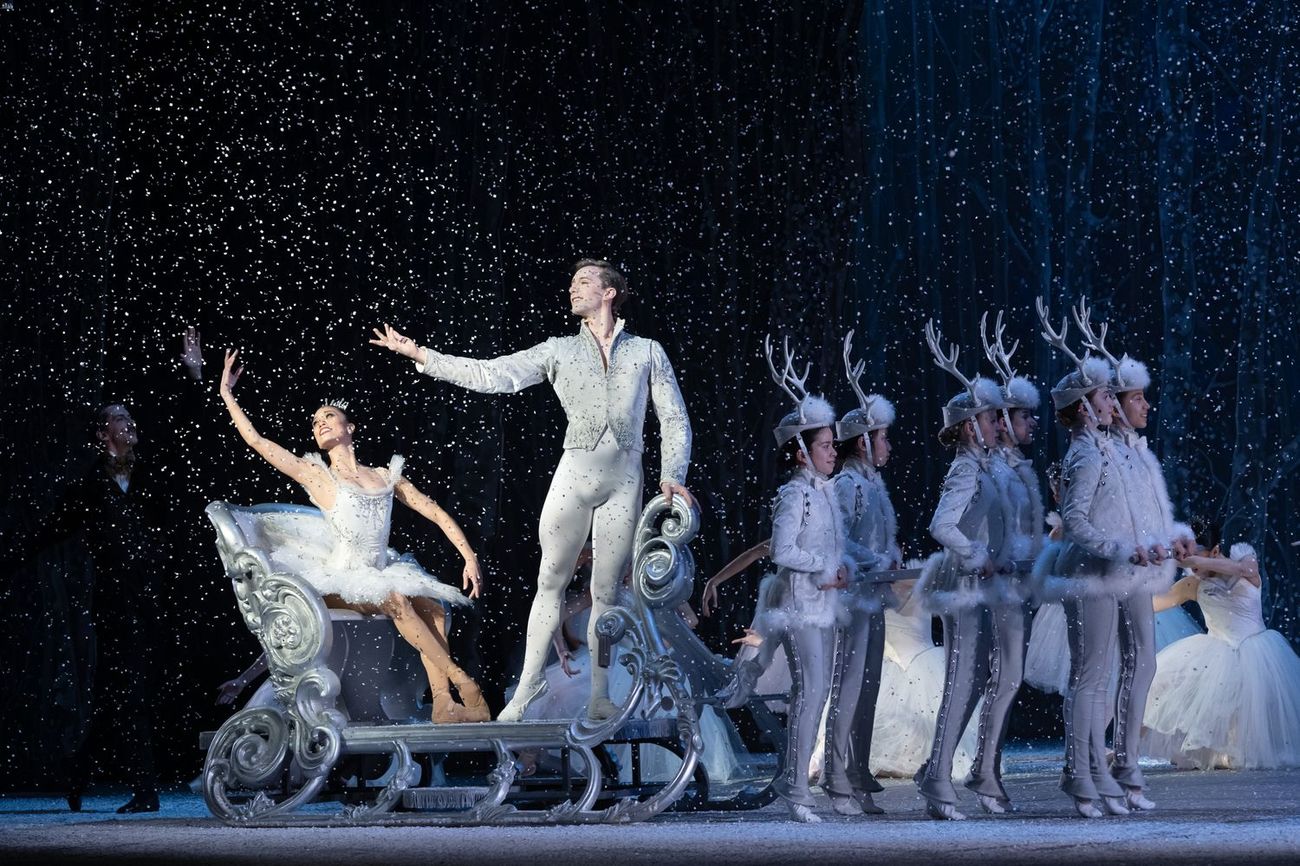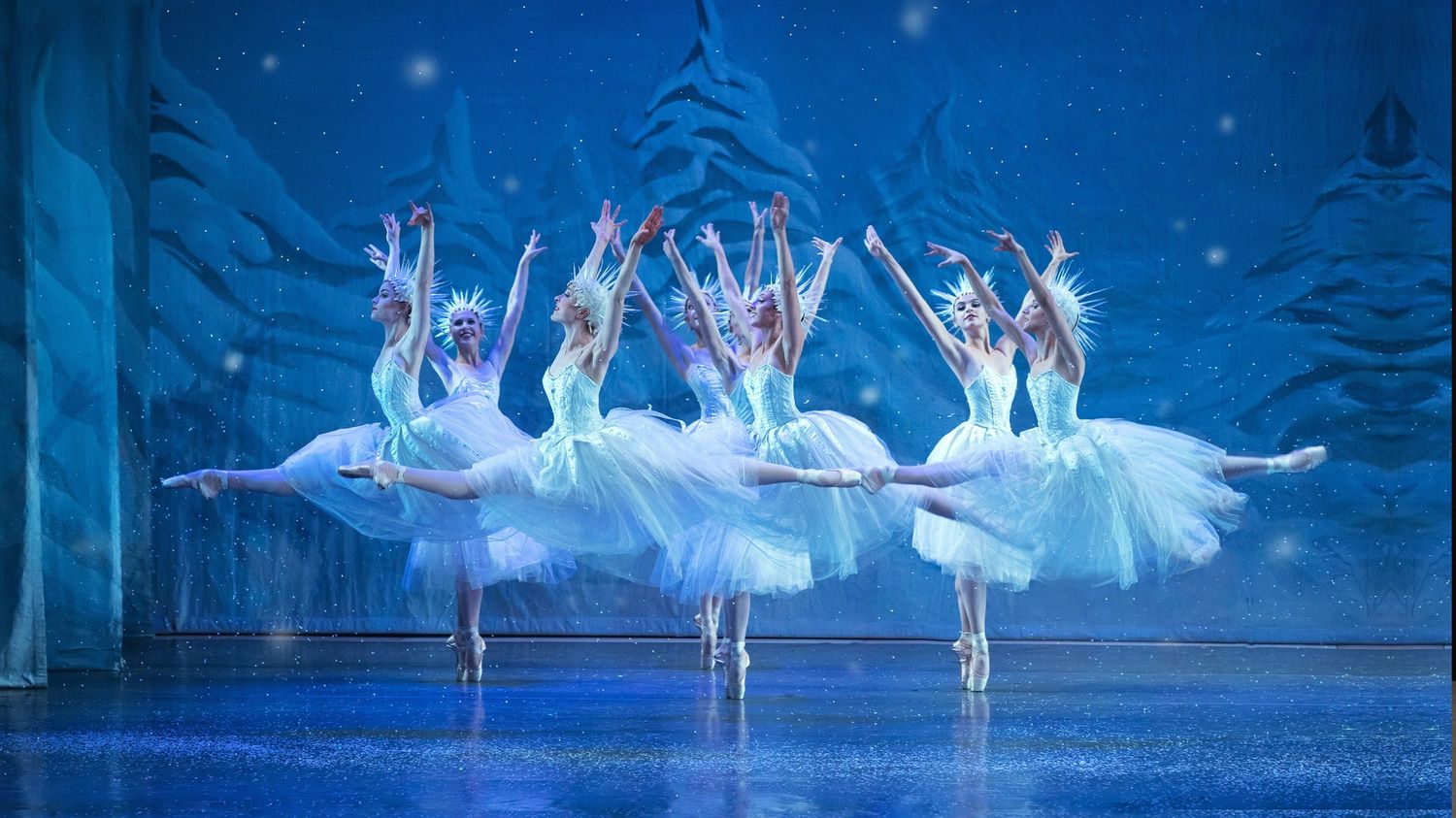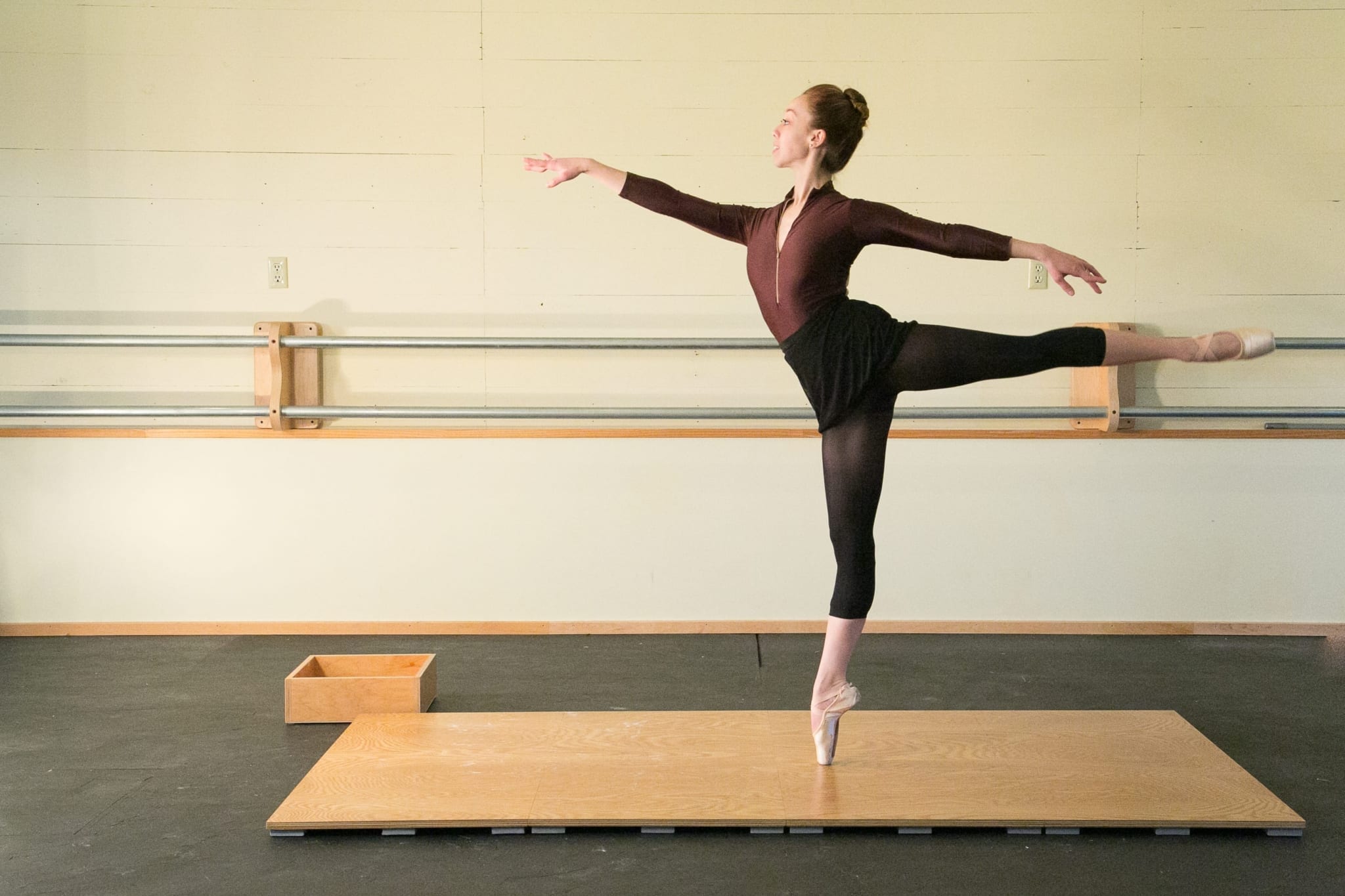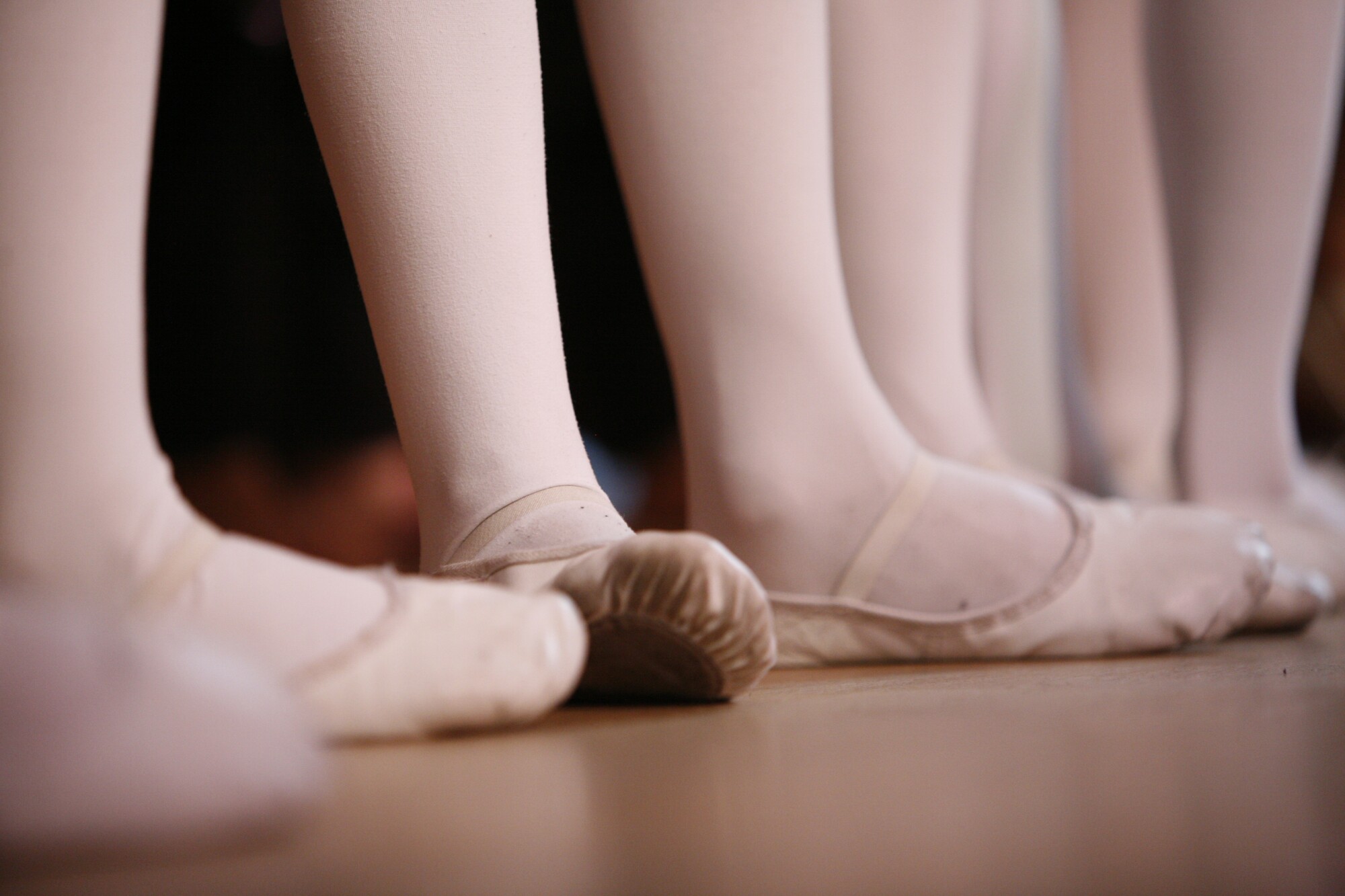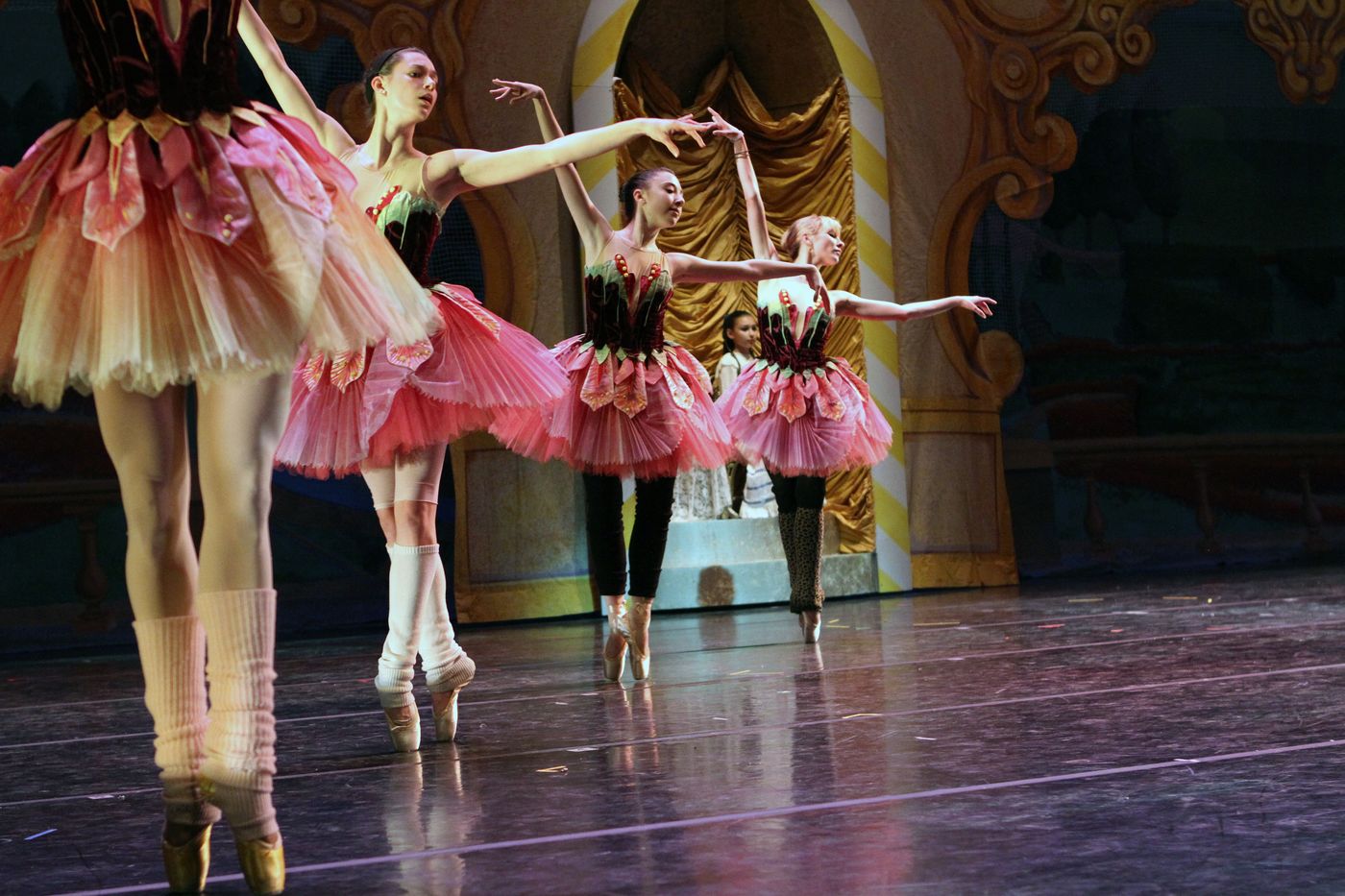Home>Events & Info>Ballet>What Is The Best Nutcracker Ballet
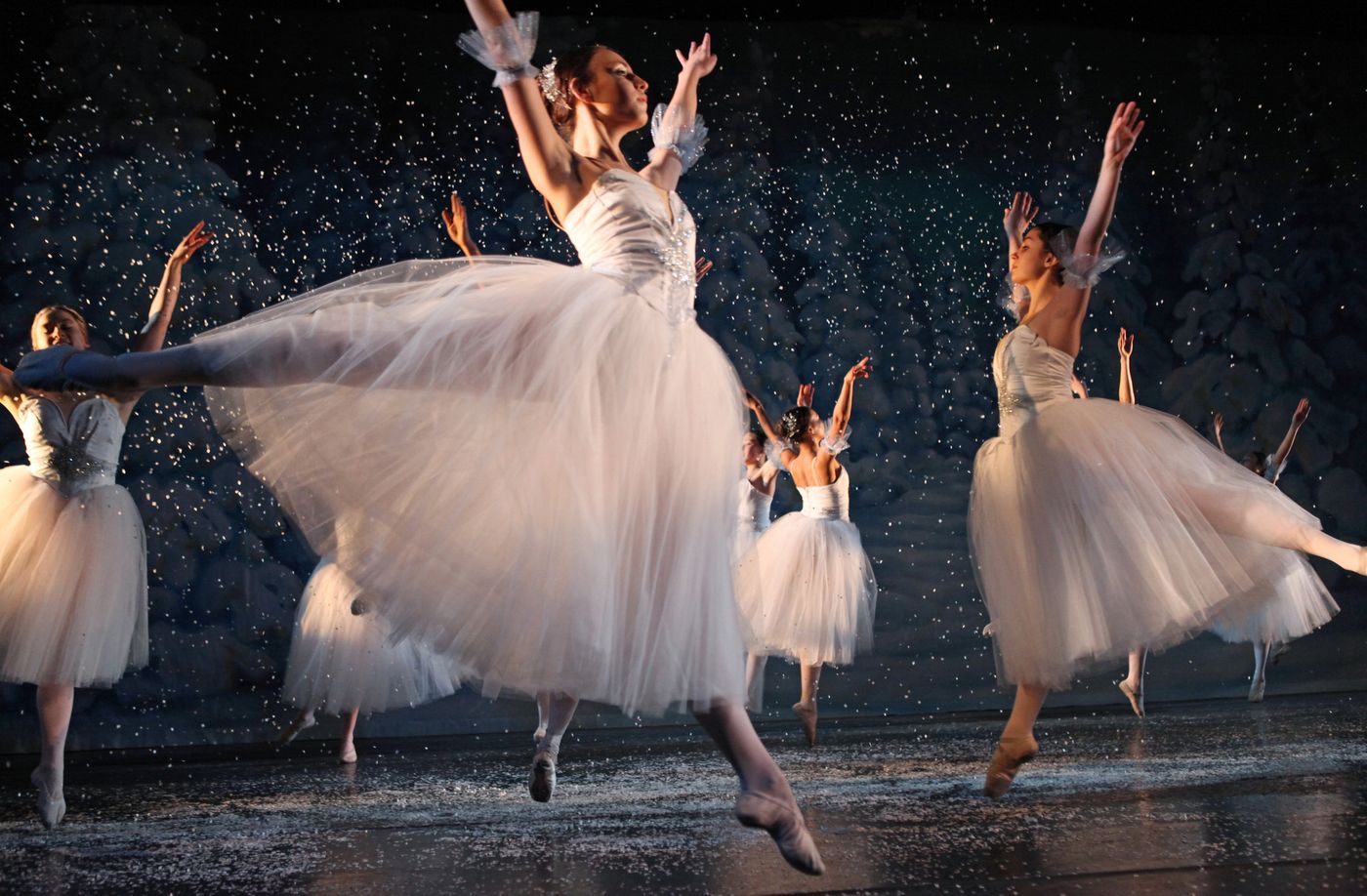

Ballet
What Is The Best Nutcracker Ballet
Published: January 7, 2024
Discover the best nutcracker ballet performances that showcase the beauty and grace of ballet. Watch these enchanting shows and immerse yourself in the world of dance.
(Many of the links in this article redirect to a specific reviewed product. Your purchase of these products through affiliate links helps to generate commission for AudioLover.com, at no extra cost. Learn more)
Table of Contents
Introduction
The Nutcracker Ballet is a timeless classic that has captivated audiences around the world for decades. This iconic ballet, featuring Tchaikovsky’s enchanting music and a magical storyline, has become a beloved holiday tradition for many families. But what exactly makes the Nutcracker Ballet so special and why has it stood the test of time?
At its core, the Nutcracker Ballet tells the story of Clara, a young girl who embarks on a whimsical journey filled with toys that come to life, an epic battle between the Nutcracker and the Mouse King, and a magical land ruled by the Sugar Plum Fairy. It is a tale of adventure, fantasy, and the power of imagination.
But beyond its enchanting story, the Nutcracker Ballet is a masterpiece of artistry and technical skill. From the intricately choreographed dance movements to the elaborate costumes and set designs, every aspect of the production is meticulously crafted to create a visually stunning experience.
Originally choreographed by Marius Petipa and Lev Ivanov in 1892, the Nutcracker Ballet premiered in St. Petersburg, Russia. However, it wasn’t until it was introduced to Western audiences in the 1940s that it gained widespread popularity. Today, countless ballet companies worldwide perform their own interpretations of the Nutcracker during the holiday season, attracting both seasoned ballet enthusiasts and newcomers alike.
Furthermore, the Nutcracker Ballet serves as a gateway to the world of dance for many aspiring young performers. Children often dream of dancing the roles of Clara or the Sugar Plum Fairy, and the ballet provides them with an opportunity to showcase their skills and be part of a longstanding tradition.
Join us as we delve into the history, different versions, and key elements that make the Nutcracker Ballet truly special. We will explore the significance of the music, compare popular productions, and uncover the lasting impact and enduring popularity of this beloved ballet.
So grab your seat in the theater and prepare to be transported into a world of magic and enchantment as we unravel the secrets behind the best Nutcracker Ballet productions.
History of the Nutcracker Ballet
The Nutcracker Ballet has a rich and fascinating history that dates back to the late 19th century. Its story is rooted in E.T.A. Hoffmann’s classic tale, “The Nutcracker and the Mouse King,” which was first published in 1816. The story follows a young girl named Clara and her magical adventures on Christmas Eve.
In 1891, renowned composer Pyotr Ilyich Tchaikovsky was commissioned by Marius Petipa, the Ballet Master of the Imperial Russian Ballet, to compose the music for a new ballet based on Hoffmann’s story. Tchaikovsky enthusiastically took on the task, creating a musical score that would accompany the enchanting tale.
The original production of the Nutcracker Ballet premiered on December 18, 1892, at the Mariinsky Theatre in St. Petersburg, Russia. Choreographed by Petipa and his assistant, Lev Ivanov, the ballet was initially met with mixed reviews. However, over time, it gained popularity and gradually became a staple of the Russian ballet repertoire.
It wasn’t until the 1940s that the Nutcracker Ballet gained immense popularity in the United States. The credit for its success in America goes to Russian-born choreographer George Balanchine, who staged the first full-length production of the ballet for the New York City Ballet in 1954. This production is still widely performed today and has become a cherished holiday tradition.
The Nutcracker Ballet continued to evolve with different choreographers putting their own unique spin on the production. Some notable versions include the Royal Ballet’s interpretation by Sir Peter Wright, the American Ballet Theatre’s revision by Alexei Ratmansky, and the Moscow Ballet’s Russian-influenced version.
What sets the Nutcracker Ballet apart from other ballets is its connection to the holiday season. As a result, it has become a cherished tradition for families worldwide, marking the beginning of the festive period. The ballet’s imaginative storyline and iconic characters, such as the Nutcracker Prince and the Sugar Plum Fairy, have captured the hearts of audiences for generations.
Over the years, the Nutcracker Ballet has gained international acclaim and has been performed by ballet companies all over the world. Its popularity has transcended cultural boundaries, making it a universally recognized and beloved production.
Join us as we explore the different versions of the Nutcracker Ballet and delve deeper into what makes each one unique and special.
Different Versions of the Nutcracker Ballet
The Nutcracker Ballet has been reimagined and adapted by numerous ballet companies around the world, resulting in a diverse collection of versions that showcase the creativity and artistic vision of choreographers. While the story of Clara and her magical journey remains at the heart of each interpretation, there are variations in choreography, set design, costumes, and even the portrayal of certain characters.
One of the most renowned versions is George Balanchine’s staging for the New York City Ballet. Balanchine’s choreography emphasizes the classical ballet technique, with intricate footwork, mesmerizing pointe work, and captivating group formations. His version is known for its grandeur, showcasing dazzling sets and intricate costuming that transport audiences to a fantastical world.
On the other hand, Sir Peter Wright’s interpretation for the Royal Ballet focuses on storytelling and character development. Wright places a strong emphasis on the relationship between Clara and the Nutcracker Prince, highlighting their connection throughout the ballet. His version strives to engage the audience emotionally, allowing them to connect deeply with the characters and their journey.
Alexei Ratmansky, known for his contemporary choreography, has also made his mark on the Nutcracker Ballet. In his version for the American Ballet Theatre, Ratmansky incorporates inventive and dynamic movement vocabulary, infusing the classic ballet with a fresh and modern energy. Additionally, he pays attention to intricate details and adds layers of storytelling to enhance the audience’s understanding of the narrative.
Another notable interpretation is the Moscow Ballet’s Russian-influenced version. Drawing inspiration from the rich tradition of Russian ballet, this version highlights the country’s unique ballet style and cultural elements. From the Russian Dance to the iconic Snowflakes scene, this version celebrates the ballet’s origins and showcases the beauty and precision of Russian ballet technique.
While these are just a few examples, there are many other noteworthy versions of the Nutcracker Ballet. Each one offers a distinct artistic vision and showcases the talent and creativity of the choreographers and ballet companies involved. Deciding which version is the best ultimately comes down to personal preference and what resonates most with the viewer.
Whether you prefer the classical elegance of Balanchine’s version, the emotional depth of Wright’s interpretation, the contemporary flair of Ratmansky’s choreography, or the traditional Russian influence of the Moscow Ballet’s production, the beauty of the Nutcracker Ballet lies in its ability to be interpreted and reimagined in numerous captivating ways.
Join us as we delve further into the key elements that make a Nutcracker Ballet production stand out and explore the impact and popularity of this beloved ballet.
Comparison of Popular Nutcracker Ballet Productions
The Nutcracker Ballet has been staged by numerous ballet companies around the world, each offering their own unique interpretation of this beloved holiday classic. While all versions adhere to the basic storyline and iconic characters, there are notable differences in choreography, set design, costumes, and overall artistic vision. In this section, we will compare some of the most popular Nutcracker Ballet productions to highlight their distinct features.
George Balanchine’s staging for the New York City Ballet is often regarded as the benchmark for the Nutcracker Ballet. Balanchine’s choreography focuses on clean lines, precise footwork, and intricate patterns, showcasing the technical prowess of the dancers. The sets and costumes in his production are opulent and lavish, creating a visually stunning experience. Balanchine’s version places a strong emphasis on the grandeur of the ballet, making it a dazzling spectacle for audiences.
On the other hand, Sir Peter Wright’s interpretation for the Royal Ballet takes a more narrative-driven approach. Wright pays careful attention to character development and storytelling, ensuring that the audience is fully immersed in the world of Clara and the Nutcracker Prince. His choreography combines classical ballet technique with expressive movements, bringing out the emotional depth of the characters. The sets and costumes in Wright’s production are exquisitely detailed and capture the charm and magic of the ballet.
Alexei Ratmansky’s version for the American Ballet Theatre offers a contemporary twist on the Nutcracker Ballet. Ratmansky incorporates dynamic and innovative choreography, injecting energy and excitement into the performance. His production features updated sets and costumes that bring a fresh aesthetic while still honoring the traditions of the ballet. Ratmansky’s version seeks to connect with modern audiences and showcases the versatility and athleticism of the dancers.
The Moscow Ballet’s Russian-influenced version brings a sense of nostalgia and tradition to the Nutcracker Ballet. Drawing inspiration from the rich history of Russian ballet, this production showcases the country’s unique style and technique. The choreography highlights the beauty and precision of Russian dance, especially in iconic scenes like the Snowflakes and the Russian Dance. The sets and costumes in the Moscow Ballet’s production evoke a sense of Russian folklore, immersing the audience in a nostalgic and enchanting world.
When comparing these popular Nutcracker Ballet productions, it ultimately comes down to personal preference and what aspects of the ballet speak to each individual viewer. Some may prefer the grandeur and elegance of Balanchine’s version, while others may be drawn to the emotional depth and storytelling of Wright’s interpretation. Ratmansky’s contemporary flair and the Russian influence in the Moscow Ballet’s production offer additional options for those seeking a different experience.
Each production brings its own unique vision and artistic choices, making the Nutcracker Ballet a versatile and ever-evolving masterpiece. Whether you prefer classic elegance, immersive storytelling, contemporary dynamism, or a nostalgic touch, there is a Nutcracker Ballet production out there that will resonate with you.
As we continue our exploration of the Nutcracker Ballet, we will delve into the key elements that make each production stand out and examine the importance of music in creating a truly magical experience.
Elements that Make a Nutcracker Ballet Stand Out
A Nutcracker Ballet production can truly captivate audiences when it incorporates certain key elements that make it stand out from other interpretations. While each version may have its own unique features, there are several overarching elements that contribute to the magic and allure of a Nutcracker Ballet.
1. Choreography: The choreography plays a vital role in bringing the story to life and showcasing the talent and skill of the dancers. A standout Nutcracker Ballet production will feature choreography that is both technically impressive and artistically expressive. From the delicate movements of the Sugar Plum Fairy to the powerful leaps and turns of the Nutcracker Prince, the choreography should evoke emotions and leave a lasting impression.
2. Set Design: The sets are an essential visual component of the Nutcracker Ballet. They transport the audience into different magical realms, from Clara’s cozy living room to the enchanting Land of Sweets. A standout production will have meticulously designed and intricately detailed sets that create a sense of wonder and transport viewers into the story’s fantastical world.
3. Costume Design: The costumes help to bring the characters to life and enhance the overall visual appeal of the production. Elaborate and imaginative costumes, such as the Sugar Plum Fairy’s ethereal tutu or the vividly colored costumes of the flowers and snowflakes, can make a Nutcracker Ballet truly memorable. Attention to detail and craftsmanship in costume design adds an extra layer of magic to the performance.
4. Character Portrayals: The characters in the Nutcracker Ballet, from Clara and the Sugar Plum Fairy to the Nutcracker Prince and the Mouse King, provide opportunities for dancers to showcase their acting skills alongside their technical prowess. Standout productions will have dancers who not only embody these characters physically but also bring depth and personality to their portrayals, allowing audiences to connect emotionally with the story.
5. Creative Interpretations: While staying true to the essence of the Nutcracker Ballet, a standout production may incorporate creative interpretations or additions that make it unique. Whether it’s a fresh approach to the choreography, innovative staging, or a reinterpretation of certain characters, these creative choices can breathe new life into the ballet and offer audiences a fresh perspective.
6. Attention to Detail: Productions that pay attention to even the smallest details can truly elevate the Nutcracker Ballet experience. From the precise execution of intricate dance movements to the nuances in facial expressions and gestures, a standout production will showcase a high level of dedication, ensuring that every aspect of the performance, no matter how minor, is polished and refined.
By combining these elements, a Nutcracker Ballet production can truly stand out and create a magical and memorable experience for audiences. Each element contributes to the overall enchantment and transports viewers into a world of fantasy and wonder.
As we continue to explore the Nutcracker Ballet, we will take a closer look at the importance of music in this timeless production and examine the impact and enduring popularity of this beloved ballet.
The Importance of Music in the Nutcracker Ballet
When it comes to the Nutcracker Ballet, one cannot overlook the significant role that music plays in shaping the overall experience. The music, composed by Pyotr Ilyich Tchaikovsky, is an integral part of the ballet and contributes to its timeless appeal and enduring popularity.
Tchaikovsky’s musical score for the Nutcracker Ballet is renowned for its enchanting melodies, rich orchestrations, and evocative themes. From the delightful Dance of the Sugar Plum Fairy to the dramatic Battle with the Mouse King, the music brings the story to life, immersing the audience in a world of fantasy and wonder.
The music of the Nutcracker Ballet not only serves to enhance the storytelling but also carries the emotional weight of the performance. It sets the mood for each scene, conveying the excitement of the Christmas party, the mysterious allure of the Land of Snow, and the joyous celebration in the Land of Sweets. The iconic melodies and motifs evoke a range of emotions, from exhilaration and anticipation to tenderness and enchantment.
Tchaikovsky’s clever use of leitmotifs further deepens the connection between the music and the characters. Each character and theme is associated with a distinct musical motif, allowing the audience to easily identify and become emotionally invested in the journey of Clara and the Nutcracker Prince. The repetition and development of these motifs throughout the ballet create a sense of cohesion and lend a sense of familiarity and anticipation to the audience.
Moreover, Tchaikovsky’s mastery in orchestration adds dimension and texture to the ballet. The colorful soundscape created by the orchestra enhances the visual spectacle, bringing a sense of grandeur and majesty to the performance. From delicate harp arpeggios to the triumphant brass fanfares, the music immerses the audience in a sonic journey, heightening the impact of the choreography and set design.
It is not just the melodies and orchestrations that make Tchaikovsky’s music in the Nutcracker Ballet special, but also the cultural significance it holds. The Nutcracker Ballet has become synonymous with the holiday season, with its music evoking feelings of warmth, nostalgia, and celebration. The iconic melodies, such as the Dance of the Sugar Plum Fairy and the Waltz of the Flowers, have become instantly recognizable and are cherished by audiences of all ages.
The brilliance of Tchaikovsky’s music in the Nutcracker Ballet lies in its ability to transcend time and language, resonating with audiences across generations and cultures. It is a testament to the power of music in conveying emotions and creating a truly immersive and magical experience.
As we continue our exploration of the Nutcracker Ballet, we will delve into the impact and enduring popularity of this beloved ballet and uncover why it has become a holiday tradition cherished by families around the world.
Impact and Popularity of the Nutcracker Ballet
The Nutcracker Ballet has had a profound impact on the world of ballet and has become one of the most beloved and enduring productions in history. Its timeless story, enchanting music, and magical visuals have captured the hearts of audiences worldwide, making it a treasured holiday tradition for families and a staple of ballet repertoire.
One of the biggest contributions of the Nutcracker Ballet is its ability to introduce young audiences to the world of dance. Many aspiring ballet dancers get their first exposure to the art form through their involvement in Nutcracker performances. Whether as students in ballet schools or as part of youth ensembles, children have the opportunity to be a part of this iconic production, igniting a passion for dance and setting the stage for future careers in ballet.
Moreover, the Nutcracker Ballet has become a cultural phenomenon, particularly during the holiday season. Its familiar melodies and festive themes evoke a sense of nostalgia and create a magical atmosphere. The ballet has become a cherished annual tradition for many families, who eagerly attend performances year after year as a way to celebrate the holiday spirit and create lasting memories.
The enduring popularity of the Nutcracker Ballet can be attributed to several factors. Firstly, the universal appeal of the story resonates with audiences of all ages. The tale of a young girl’s journey through a world of fantasy and imagination, filled with colorful characters and dazzling dances, captures the imagination and ignites a sense of wonder.
Furthermore, the Nutcracker Ballet’s iconic music, composed by Tchaikovsky, has played a significant role in its widespread recognition and popularity. The recognizable melodies, from the delicate and ethereal Dance of the Sugar Plum Fairy to the dynamic and joyful Waltz of the Flowers, evoke a range of emotions and have become synonymous with the holiday season.
Additionally, the Nutcracker Ballet’s ability to showcase the artistry and technical skill of dancers has contributed to its enduring appeal. The ballet offers a platform for dancers to demonstrate their proficiency in classical ballet technique while infusing their interpretations with their unique artistry. From the graceful and ethereal movements of the Sugar Plum Fairy to the dynamic leaps and pirouettes of the Nutcracker Prince, the choreography requires precision, strength, and grace.
Furthermore, the Nutcracker Ballet’s enduring popularity can be attributed to the countless ballet companies worldwide that continue to stage their own versions of the production. Each company adds its own creative flair and interpretation, keeping the ballet fresh and exciting for new generations of audiences.
Whether it is attending a live performance or watching a recorded version, experiencing the Nutcracker Ballet has become a cherished holiday tradition for many. The ballet’s impact reaches far beyond the stage, leaving a lasting impression on both performers and audience members alike.
As we conclude our exploration of the Nutcracker Ballet, we are reminded of its timeless magic and the transformative power of art. The Nutcracker Ballet continues to inspire and enchant, allowing us to escape into a world of imagination and reminding us of the joy and wonder that can be found in the holiday season.
Conclusion
The Nutcracker Ballet is a masterpiece of artistry, storytelling, and music that has captured the hearts of audiences worldwide. Its timeless tale of adventure and enchantment, accompanied by Tchaikovsky’s enchanting score, has made it a beloved holiday tradition for families and a cornerstone of ballet repertoire.
From the grandeur of George Balanchine’s staging to the narrative-driven approach of Sir Peter Wright, each interpretation of the Nutcracker Ballet brings its own unique vision and artistic choices. The choreography, set design, costumes, and character portrayals all contribute to the magic and allure of the ballet, providing a rich and immersive experience for audiences.
One cannot underestimate the importance of Tchaikovsky’s music in the Nutcracker Ballet. Its evocative melodies, intricate orchestrations, and use of leitmotifs heighten the emotional impact of the story and transport listeners into a world of wonder and excitement. The music has become synonymous with the holiday season and holds a special place in the hearts of audiences of all ages.
The Nutcracker Ballet’s impact and enduring popularity extend far beyond the stage. It introduces young audiences to the world of dance and inspires aspiring dancers to pursue their passion. The ballet’s cultural significance and annual performances have made it a cherished tradition for families around the world, creating lasting memories and fostering a sense of holiday magic.
Through its timeless story, enchanting music, and captivating visuals, the Nutcracker Ballet continues to captivate audiences and ignite imaginations. Its ability to transport us into a world of fantasy, evoke a range of emotions, and celebrate the magic of the holiday season is a testament to the power of art and its ability to transcend time and cultural barriers.
As we reflect on the Nutcracker Ballet, we are reminded of the joy and wonder that can be found within the arts. It is a celebration of creativity, talent, and the universal language of music and dance. Whether seeing it live on stage or watching a recorded performance, the Nutcracker Ballet invites us to be part of a timeless tradition that brings us together and sparks the magic of the holiday season.
So, as the holiday season approaches, let us embrace the enchantment of the Nutcracker Ballet and allow it to transport us into a world of dreams and imagination. Let us revel in the beauty of the dance, the power of the music, and the joy that this beloved ballet brings to our hearts year after year.

